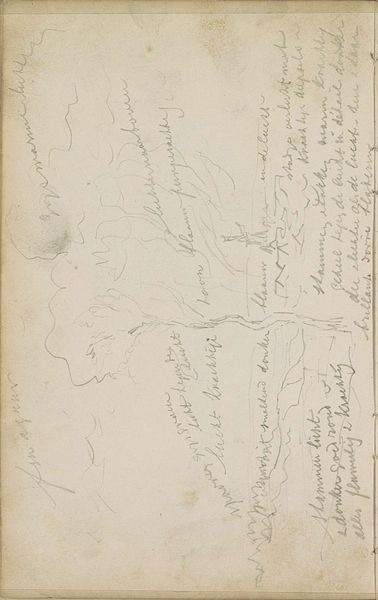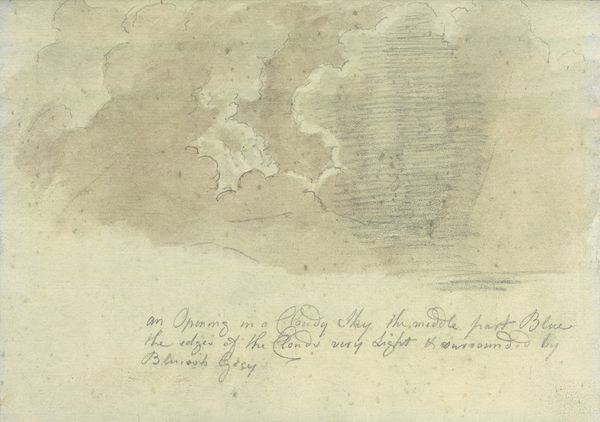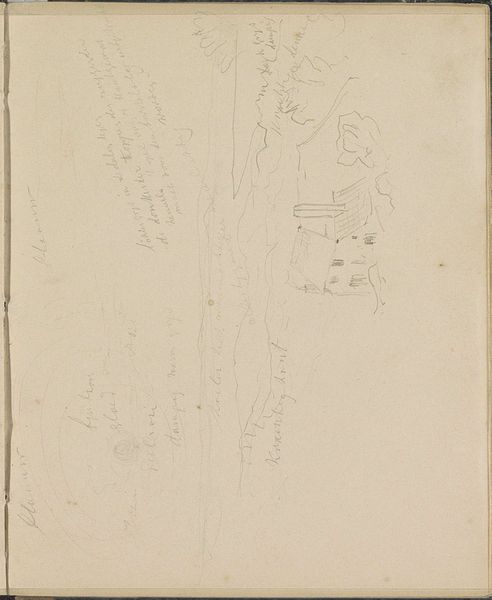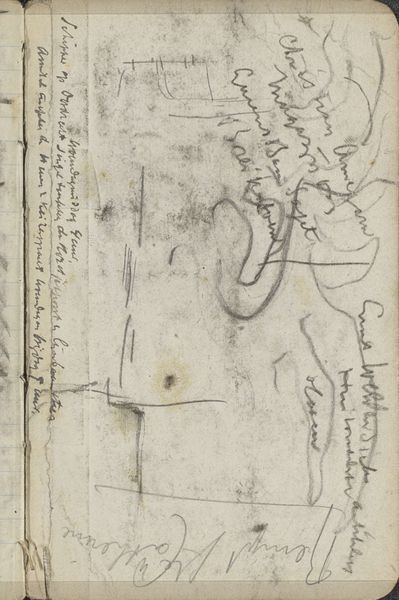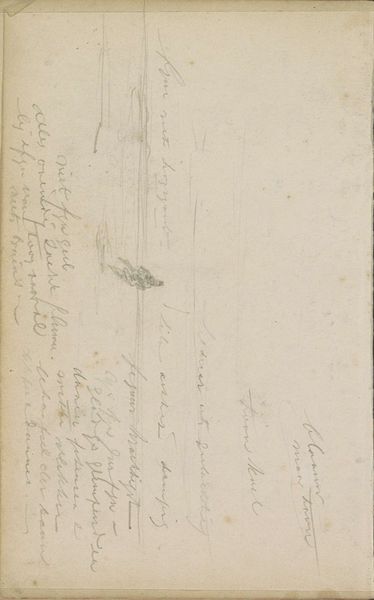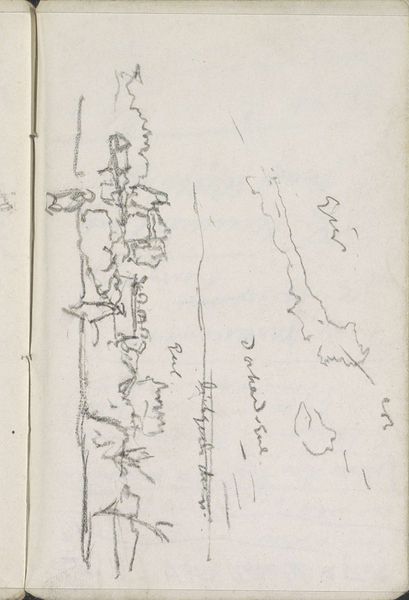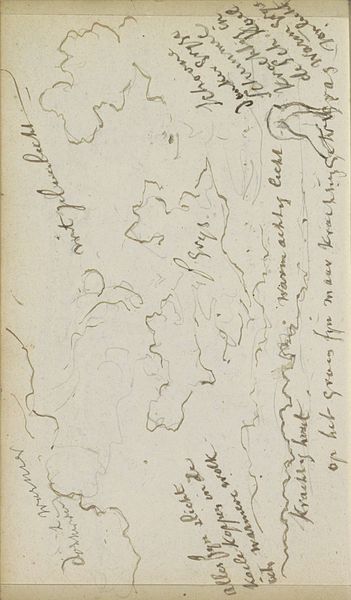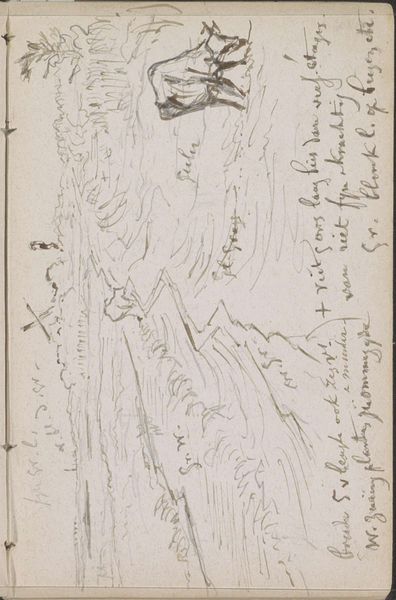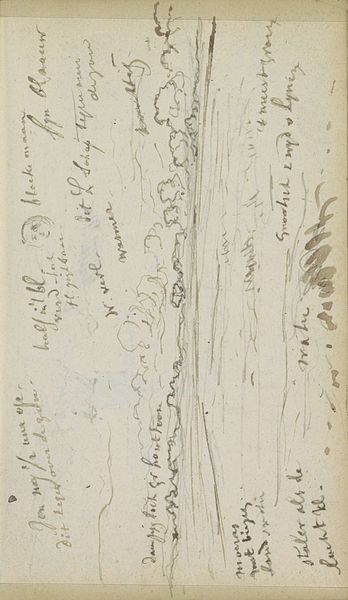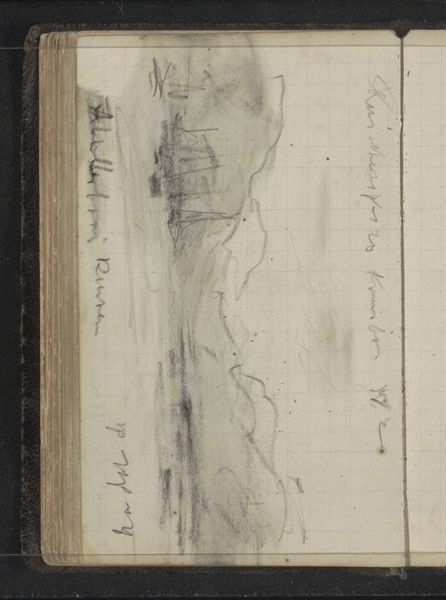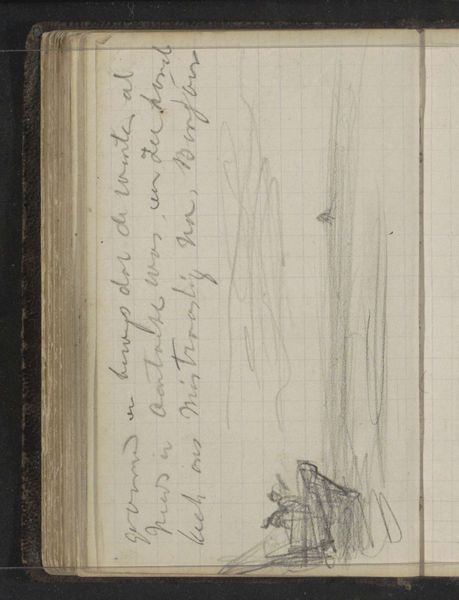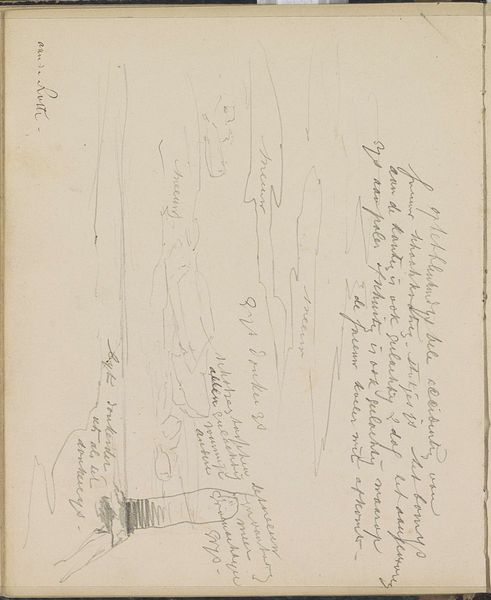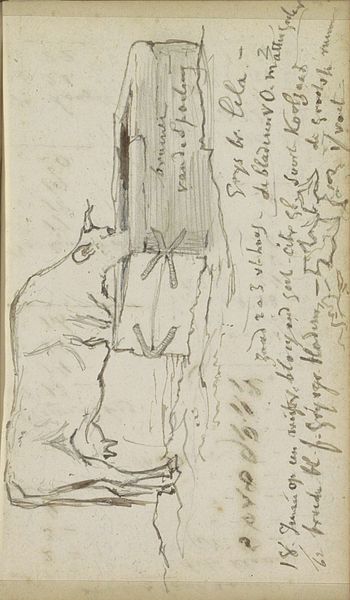
drawing, paper, pencil
#
drawing
#
landscape
#
paper
#
sketch
#
pencil
#
realism
Copyright: Rijks Museum: Open Domain
Editor: This is Johannes Tavenraat's "Lucht aan de Singel in Rotterdam," a pencil drawing on paper from the early 1860s, housed at the Rijksmuseum. The preliminary sketch really conveys a feeling of openness; the lines are faint and quick, as though capturing a fleeting moment. What do you see in this piece? Curator: I see a compelling exercise in capturing spatial depth with minimal means. The starkness of the pencil against the paper establishes a clear contrast, foregrounding the artist’s choices regarding line and form. The linear quality serves to delineate shapes, thereby structuring the visual space. Editor: Do you mean that the visible marks almost construct the landscape? Curator: Precisely. The apparent lightness, or unfinished quality, should not be mistaken for lack of intent. Consider the varying weights of the lines themselves—heavier in some areas, nearly disappearing in others. What does that variance signify? Editor: Perhaps a hierarchy? A distinction between elements the artist deemed more and less important in the scene? Or areas he planned to develop later? Curator: Possibly. Observe how the sparse detail allows the viewer to engage actively, projecting their own interpretations onto the scene. This, too, is part of its design and its effect. There is, structurally, no clear focal point; rather, our gaze is invited to wander. Editor: It’s almost like a visual fragment that's larger than the marks suggest. Thank you, this has given me a much deeper appreciation for how such simple tools can create something really fascinating. Curator: Indeed. By deconstructing its formal elements, we arrive at a richer understanding of its visual language and aesthetic value.
Comments
No comments
Be the first to comment and join the conversation on the ultimate creative platform.
